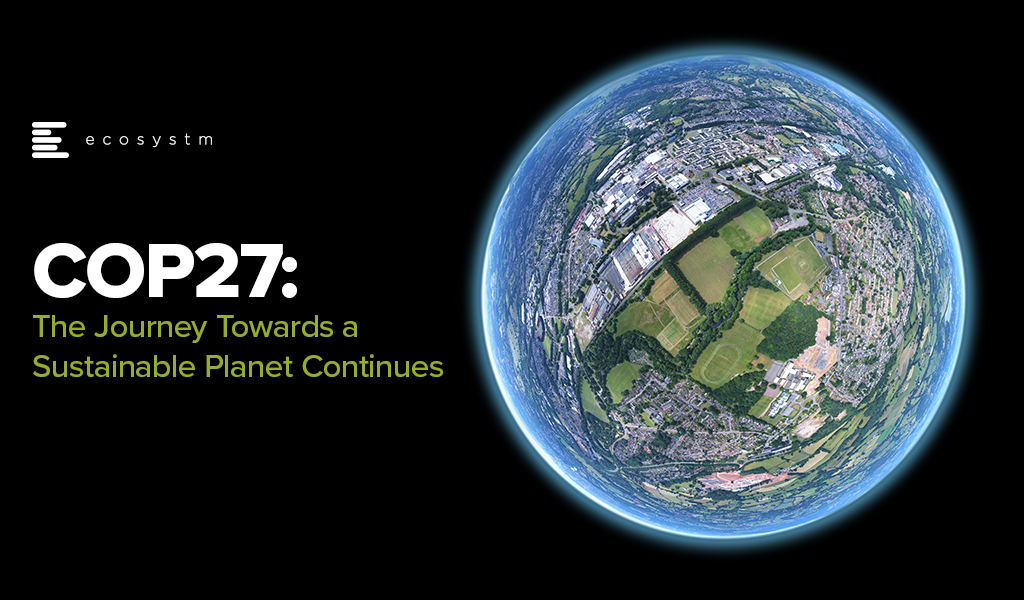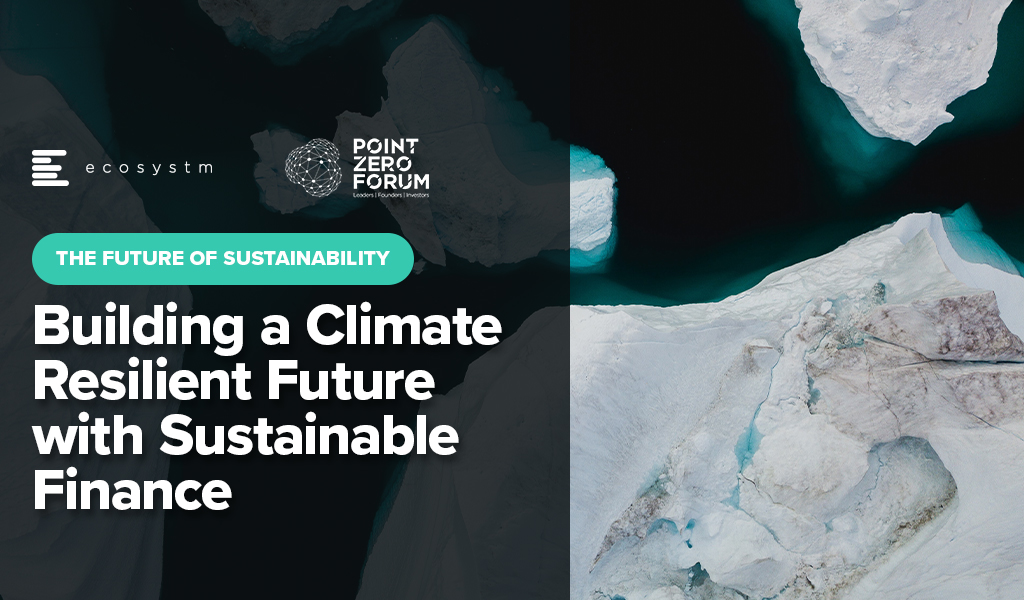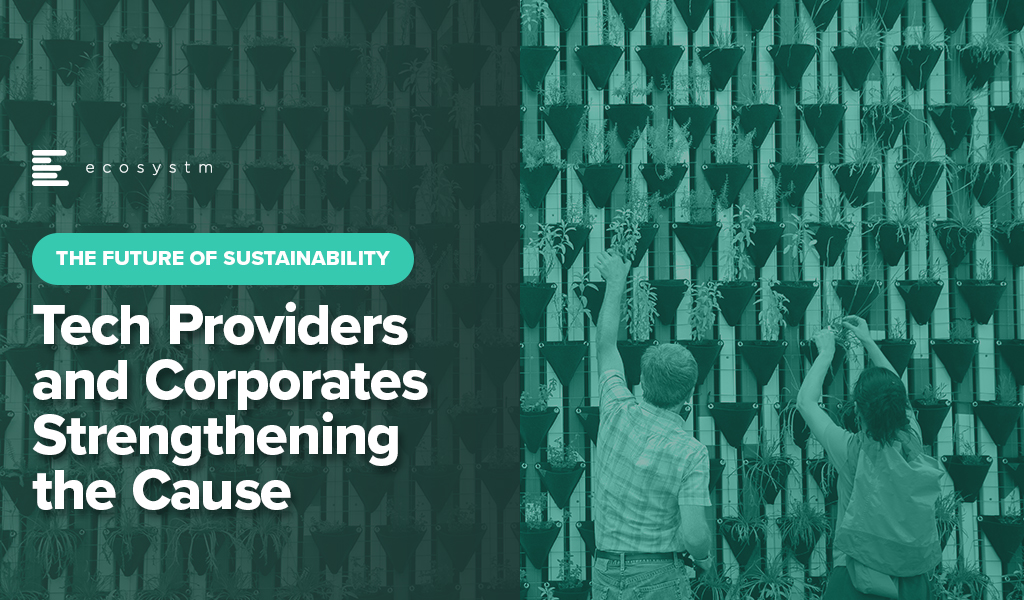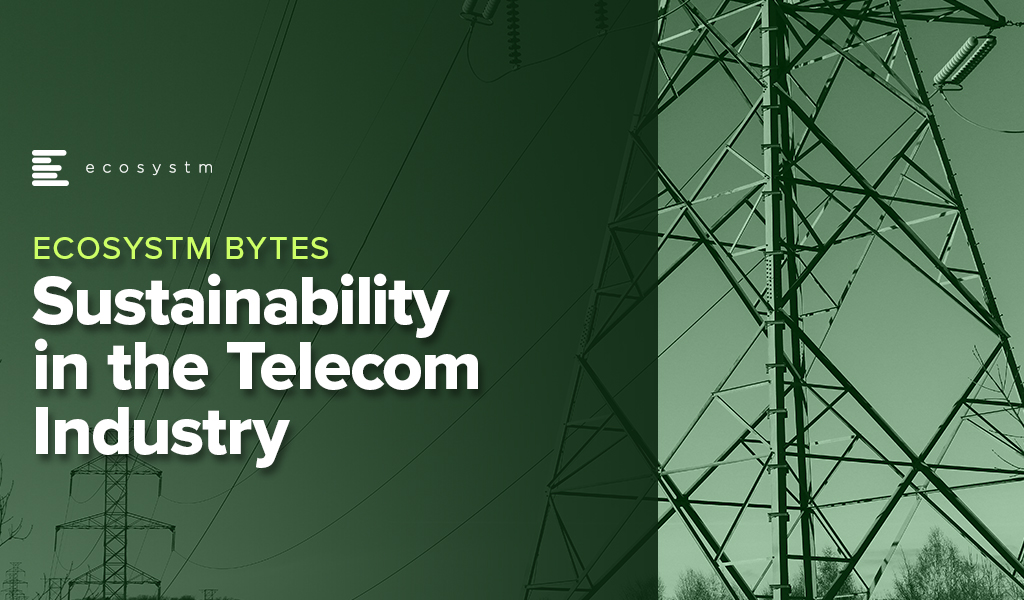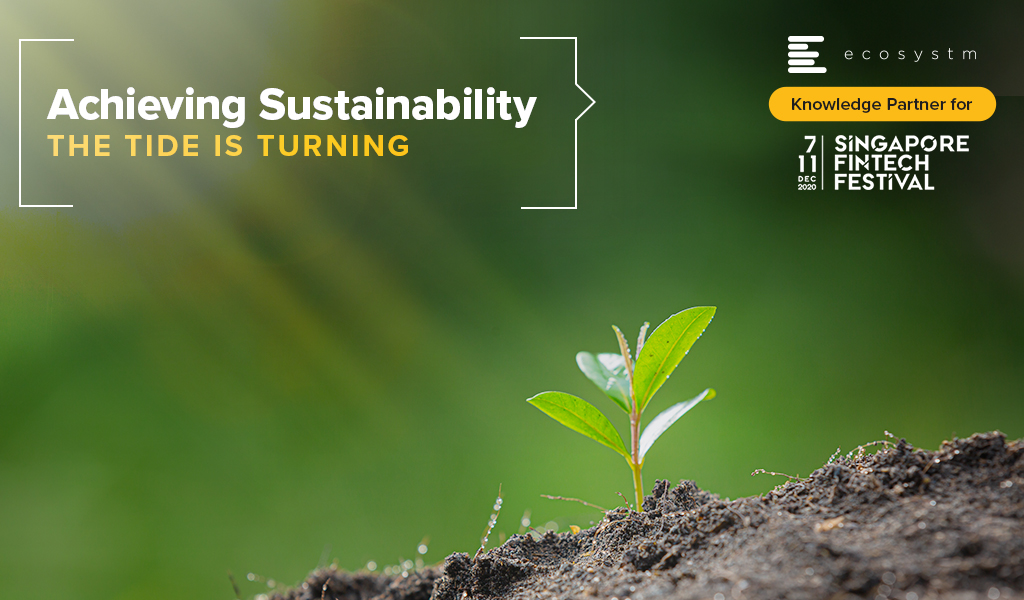The recently concluded 27th Conference of the Parties to the United Nations Framework Convention on Climate Change (COP27) brought together Heads of State, ministers and negotiators, climate activists, mayors, civil society representatives, and CEOs in Egypt’s city of Sharm el-Sheikh to discuss climate action. The conference aimed to build on the outcomes of COP26 to effectively tackle the current climate emergency and set goals for the future.
Where COP26 Left Off
Before we look at COP27, here’s a look at what COP26 committed to and what the progress has been. The conference had ended on an ambitious note with a slew of climate plans and pledges undertaken by countries for the upcoming decades. In addition, all countries agreed to come back to COP27 with stronger, more focused climate plans of actions. The event saw 141 countries promise to halt and reverse forest loss and land degradation by 2030. As part of the Paris Agreement, 151 countries updated their nationally determined contributions (NDCs). Over 100 countries also signed the Global Methane Pledge to cut their collective methane emissions by 30% by 2030. The Glasgow Climate Pact was released at the end of COP26, which highlighted the need to phase out coal. During the conference, the Glasgow Financial Alliance for Net Zero (GFANZ) committed over USD 130 trillion in private capital towards achieving net-zero goals.
However, climate activists pointed out that there were some missed points:
- Ocean crisis was not addressed
- The progress on Climate Change Policy was hindered due to a lack of gender equality
- There was a lack of agreement on loss and damage finance from mature economies to emerging economies facing wide-scale destruction of life and property due to extreme weather events
- While many countries did set long-term goals, there was a lack of short-term targets for 2030
COP27 Continues to Pave the Path Ahead
Despite a lot of commitments being made during the previous conferences, not a lot of those targets were met. This year, one of the crucial focus points was the implementation of existing targets instead of setting new goals. The top themes at COP27 were climate finance, adaptation, loss and damage, and increased ambition.
Loss and Damage. In a first, ‘loss and damage’ was made a part of the provisional agenda of discussion on matters relating to finance. Smaller nations called for a treaty against fossil fuels, and a global tax on corporations’ profits from fossil fuels. Countries, including Austria, Germany, Belgium, and New Zealand, promised funds to emerging economies to help them with the loss and damage caused by activities undertaken by mature economies.
Adaptation. COP27 President Sameh Shoukry launched the Sharm El-Sheikh Adaptation Agenda, which outlines 30 adaptation outcomes that, if completed by 2030, will positively impact about four billion people in lesser developed areas in the world. UN secretary-general António Guterres also addressed the conference and suggested a universal early warning system for five years. In addition, the UN Human Rights and Right Here, Right Now launched the Human Rights Climate Commitments (HRCC) which is an initiative for rights-based climate action.
Accountability. Apart from this, discussions to highlight how greenwashing and weak net zero pledges are threatening to undermine global efforts were held. Global securities regulators called for a closer review of carbon trading to prevent greenwashing by companies to offset their emissions. This has led to a need for transparency and holding organisations accountable for net zero goals as well as establishing clear regulations and standards.
Other key areas of discussions focused on integrating renewable energy and bringing better energy solutions that cater to diverse countries and requirements and the Ukraine war and its impact on the Middle East and Africa. The COP27 agenda this year focused on various topics around finance, resilience, industry, land use, water, energy, and transport to create a sustainable planet.
Future Expectations
With several successful conferences behind us, the world wants more focused implementations and lesser conversations. Here are some of the future expectations:
- Emerging economies want to see ‘loss and damage’ a part of long-term climate agendas.
- As extreme weather conditions continue, concrete short-term plans to deal with the water and soil crisis are just as important as long-term ones.
- More collaborations are required between governments, corporates, investors, and society for new solutions and innovations.
- Corporates need to commit more to funding sustainable projects, invest in sustainable technology, and actually, reduce their carbon footprint.
- With today’s unpredictable times, policies need to be framed such that they can easily be amended and adapted to ensure that there is no pause or stop when implementing them.
The need of the hour is to address implementation blocks, facilitate conversations for funding and partnerships, and simple policies that are realistic – especially if 2030 and 2050 targets are to be met.

The 2021 United Nations Climate Change Conference (COP26, that was held in Glasgow in 2021, highlighted the need to mobilise public and private sector finance to support global net-zero emissions targets and to protect communities and habitats.
Sustainable Finance and Green Bonds present opportunities for lenders, investors, and borrowers. It allows borrowers to obtain funding at decreased and competitive costs. And as investor demands continue to rise, Government institutions have expressed keen interest in issuing green bonds to support ecologically beneficial initiatives.
Here are some recent global announcements.
- France announces the issuance of USD 4 billion green bond sale.
- Germany raises USD 4 billion in green bonds to finance green expenditures and investments.
- Singapore sets a roadmap for its first sovereign green bond with the Singapore Green Bond Framework.
- Austria launches its first green bond.
- The UK launches an inquiry into the role of the financial sector in the country’s net zero transition.
Download Building a Climate Resilient Future with Sustainable Finance as a PDF

COP26 has firmly put environmental consciousness as a leading global priority. While we have made progress in the last 30 odd years since climate change began to be considered as a reality, a lot needs to be done.
No longer is it enough for only governments to lead on green initiatives. Now is the time for non-profit organisations, investors, businesses – corporate and SMEs – and consumers to come together to ensure we leave a safer planet for our children.
February saw examples of how technology providers and large corporates are delivering on their environmental consciousness and implementing meaningful change.
Here are some announcements that show how tech providers and corporates are strengthening the Sustainability cause:
- IBM launches Sustainability Accelerator Program
- Microsoft boosts their Sustainability offerings by extending extend their EID tool for Microsoft 365
- Salesforce officially announce sustainability as a core company value
- Google enables Sustainable AIOps
- The Aviation industry (Southwest Airlines, ANA, Norwegian Air and Singapore Airlines) appears to be making a concerted effort to reduce carbon footprint.
Read on to find more.
Click here to download a copy of The Future of Sustainability as a PDF.

Telecom companies’ spending on utilities (electricity, fuel, and water) amounted to an estimated 5.2% of OpEx (excluding depreciation and amortisation) in 2020, a bit up from the previous three years. There is modest evidence that 5G adoption is driving costs higher. Early adopters, such as China Mobile, Ooredoo, Swisscom, Telecom Italia, and all three of Korea’s big telecom providers (SKT, KT, and LG Uplus) saw increases in utilities spend in 2020. Increases generally weren’t big but serve as a good reminder that telecom providers will need to seek out energy efficient equipment, software, and network architectures as 5G penetration grows.
Telecom providers also need to rise to the challenge of truly serving as enablers of sustainability. Rather than just viewing energy as a cost centre, they should work with customers and partners to move rapidly towards green energy and reductions in usage.
Some providers are already on this path, but not nearly enough.
At the COP26 there was a strong focus on collective action aimed at curtailing climate change trends. It is all the more important for private companies to take voluntary action. Unfortunately, they’ll only do that if they get public credit for such actions, or if the changes turn out to save money.
Telecom providers have a role to play here. They have an intimate relationship with millions of customers, and an understanding of how their behavior impacts energy usage. It’s time for them to start monetising the insights, help their customers decrease consumption, save cash and position themselves as climate friendly. Recent offerings from European telecoms such as KPN, Swisscom and Vodafone point in the right direction.
Click here to download Sustainability in the Telecom Industry as a PDF

In this blog, our guest author HE Jo Tyndall, delivers a message of hope for the future and talks about initiatives across all levels to combat climate change and biodiversity loss. “The pieces of the puzzle that will create a sustainable future are all there – it is time to start fitting them together.”

If, like me, you have watched Sir David Attenborough’s “witness statement” (A Life On Our Planet), it is easy to despair of the wanton, wilful destruction humanity has wreaked on the Earth, and to be horrified that so much of this has happened in one man’s (admittedly long) lifetime. The images he conjures – of distressed orangutans, starving polar bears, floods, fires and droughts, and of rampant deforestation – underscore how ubiquitous, urgent and overwhelming the climate change and biodiversity crises are.
But Sir David ends with a message of hope, and it is this I want to emphasise. Everywhere we look, there are green shoots of hope, many growing into sturdy saplings. They are coming thick and fast, and they are becoming mainstream – no longer relegated to the tick-box margins of policy or practice. The pieces of the puzzle that will create a sustainable future are all there – it is time to start fitting them together.
Political Signals Create a Ripple Effect
First, and foremost, in 2015 we got the Paris Agreement (and subsequently its rulebook). This was no mean feat. It set climate goals, gave us global rules for being transparent and accountable, and put governments on a path of continuous improvement to reach those collective goals. It is easy to dismiss global treaties as just words on paper, but this is to ignore the profound ripple effect those words have already had. (The Agreement held firm despite the US withdrawal – but the fillip when it re-joins will be welcome.)
The political signals set the first ripples off as governments needed climate policies to meet their Paris undertakings. The European Green Deal aims for a sustainable EU economy, with no net greenhouse gas emissions by 2050, decoupling economic growth from resource use. The UK will host next year’s UN Climate Change Conference of the Parties (COP26) – and has doubled its climate finance for the period 2021-2025.
In September this year, China – the world’s largest emitter of greenhouse gases – announced it would achieve carbon neutrality by 2060. Japan and Korea, too, have upped their mid-century targets to bring net emissions to zero.
The New Zealand Government has set a legislated goal for the country to be carbon neutral by 2050; has amended our Emissions Trading System (ETS) to ensure price signals encourage a move to low carbon; set up a green investment fund; invested heavily in research into reducing emissions from livestock production; and, most recently, made carbon-related financial disclosures mandatory for specified companies, banks, insurers and investment managers. We have also made it our mission to encourage governments to phase out fossil fuel subsidies (some US$400bn each year) that promote excessive consumption.
The Ripples Reach Cities and Businesses…
The political signals have flowed through to regional and local government. The C40 group (cities around the world working towards sustainability goals) now has 96 participating members – with many cities finding opportunities to collaborate with others in the network on joint projects.
It is becoming obvious that fossil fuel industries are at a disadvantage against increasingly cost-competitive renewable energy. Governments are working out how to manage a ‘just transition’ for the energy sector, while forward-leaning energy companies are re-shaping their business models in anticipation of a low carbon future.
Political signals encourage businesses to factor climate change into their planning and investment decisions. Businesses everywhere have read the political tea leaves and we see weekly announcements of pledges for carbon neutrality, ethical investing, green financing and so on. Whether it is Blackrock or NZ Super Fund making environmental, social, and governance (ESG) considerations integral to their investments, or Ikea’s IWAY (its ESG code of conduct for itself and its suppliers), business is showing a deeper commitment to sustainability than ever before.
Some industries will have to be more invested than others in emissions reduction, but this opens a world of opportunity and innovation. Energy & Utilities companies are implementing waste-to-energy solutions – Singapore’s Integrated Waste Management Facility (IWMF) is set to be the world’s largest energy recovery facility – and adoption of carbon capture, utilisation and storage (CCUS) facilities is at last gathering momentum across energy systems. Industries like aviation and maritime, too, have to play a key role in a circular economy.
… And Individuals (the Last – and First – Pieces of the Puzzle)
The ripples have spread to individuals – people like you and me. I know there are still plenty of climate deniers around. But mindsets are changing – and when that happens, the ripples become a tidal wave of real change. If we each start thinking we can do it and we will do it, the change will happen. If we make it clear, in our preferences as consumers, and in our expectations of the businesses we buy from or invest in, the change will happen.
The numbers who recognise we must live within our planetary boundaries are growing, values are changing (especially in light of the pandemic), and our low-carbon future is a high-tech one – not hemp shirts and home-made candles (unless of course these are your thing). Digital is a critical part of the story. Blockchain and distributed ledger technology (DLT) is being used to cater to a new generation of consumers, conscious of buying what is good for the world in the face of climate change and biodiversity loss. Food products are being branded using track-and-trace capabilities of Blockchain for ‘farm to fork’ visibility.
Who doesn’t want to breathe clean air, have lower energy bills, and eat safe and healthy food? Maybe we will see more initiatives like America’s Pledge, bringing together an entire ecosystem committed to fighting climate change, growing the economy, and protecting public health – an ecosystem of states, cities, businesses, universities, and citizens.
We now have the rules, the policy tools, the technologies, and – increasingly – we have the will to act. As we re-build our economies, our businesses, and our lives, let us re-build better. So, I would echo Sir David Attenborough’s optimism – it is just that we do not have his (95 years) lifetime left to put things right.
Singapore FinTech Festival 2020: Impact Summit
For more insights, attend the Singapore FinTech Festival 2020: Impact Summit which will cover topics tied to climate change and sustainability to build a better future



